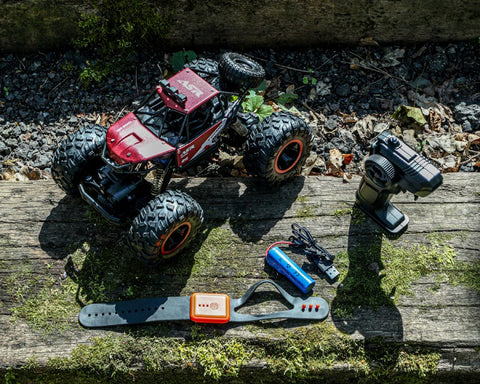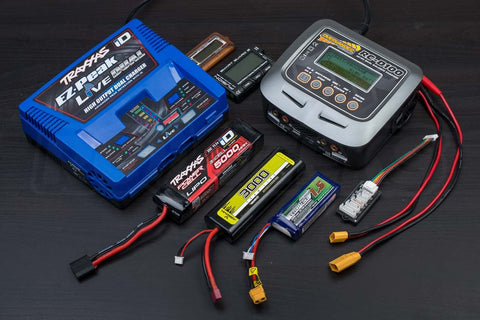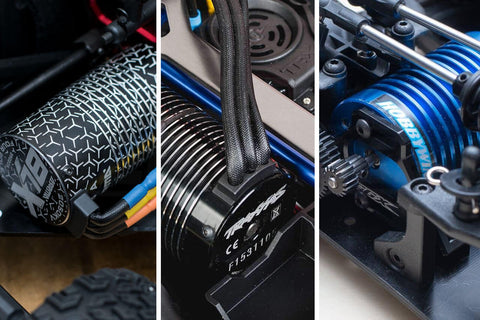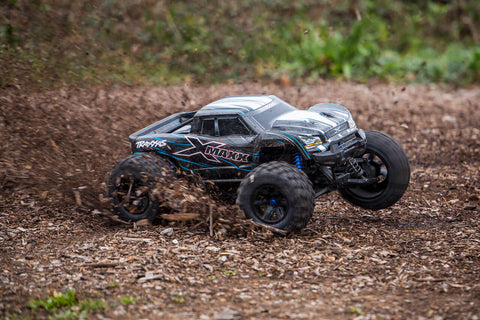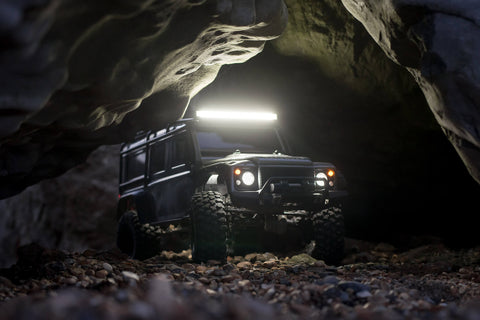Introducing DJI Osmo
Originally just a prototype at the start of the year, yesterday evening DJI finally announced its first handheld camera gimbal for ground use. Called 'Osmo' it is a 3-axis stabilised hand-held 4k camera system offering all manner of advanced shooting modes and fantastic image quality at a very reasonable price. We were privileged to be some of the first few to get our hands on it at last night's launch. The
DJI Osmo is available for order now.

What does it do and who is it for?
Simply put, the Osmo enables you to take videos, long exposure or compound photos without shake, even on the move. Its aimed at people looking to capture 4K footage and photos in tight locations such as weddings, to those looking to capture the far corners of the globe without carrying heavy and cumbersome gear. Its also suitable for events such as festivals, a garden party or just those wanting to up their selfie game (it has a selfie mode). In typical DJI fashion, it makes professional level output that much more accessible. It can be used without a smartphone thanks to its on-board controls, but with the all-new DJI Go app its true adjust ability is realised. https://www.youtube.com/watch?v=p-7BPt4bJjU
Image quality
Using a revised version of the X3 camera first found on the
Inspire 1 quadcopter, the Osmo camera is capable of capturing 4k video and 12MP stills. DJI's Osmo is different in various ways from the Inspire setup, in ways such as it's shorter standard focus point and the ability to flatten and lock the gimbal. If you are looking for high-end productions, you can swap the X3 camera out and attach the
Zenmuse X5 camera and gimbal thanks to it's modular design.
All-new functionality : Panorama / Long Exposure / Slow motion
DJI have looked at how people use their cameras in the modern age and have offered some brand new features to suit the modern photographer:
Panorama : Holding the Osmo above your head, tap the shutter release and the gimbal will rotate the camera capturing images and stitching together a full 360° panorama of your surroundings.
 Long Exposure
Long Exposure : The stabilisation allows long exposure light-trail photos to be taken without the need for a bulky tripod.
 Slow Motion
Slow Motion : Either through compressed sequences of time-lapse photos or full blown 120fps HD video, the Osmo is able to warp time and produce fantastic results whilst handheld.
DJI Osmo : Packed with features
The Osmo brings the fantastic technology DJI have pioneered in aerial cinematography, to the ground. Here is a quick feature list:
- Hand-held, 3-axis stabilised 4K camera system
- Burst, Interval, Timelapse, Auto Panorama, Selfie Panorama shooting modes
- 4k to 720p video modes with a max video bitrate of 60Mbps
- 120 fps slow motion
- 12MP stills in either JPEG or DNG Raw
- 94° FOV 20mm (35mm equiv) f/2.8 lens

Osmo Modes : Follow, Fixed and Selfie mode
The Osmo starts up in follow mode, where the camera will face forward of the handle and will smoothly rotate to follow this direction as the unit is moved around. A quick tap of the mode trigger will put you in fixed mode, here the gimbal will lock to its current heading regardless of rotation of the handle. Finally there is selfie mode, which will spin the camera 180° to face the user and lock itself to face the rear of the handle. Its also worth noting that the Osmo also supports a briefcase mode, allowing you to hold the entire system upside down or at a low angle to the ground and still get the shots you desire.

All-New Camera
An evolution of the inspire camera, the Osmo's X3 is housed in a a new black-body. Instead of defaulting to an infinity focus point, it looks around 1m ahead making it more suitable for subject tracking. There are several modifications to the gimbal, not least of all the ability to allow it to work upside down as well as flat. Existing Inspire 1 owners needn't worry as DJI have confirmed the handle will be available to buy without the included camera.

Whats in the Box?
The retail packaging is a tall yet compact box housing everything you need to get filming. Handheld gimbal and camera, mobile device holder, intelligent battery, battery charger, power cable, storage case, wrist strap (mounts to the bottom of the grip), shoulder strap, 16GB micro SD card, UV Filter, lens cap and mount protection cap.

The supplied storage case (shaped almost like a guitar case) is a hard fabric shell with soft lining, and has a red 'Osmo' tag and zip running along the longest edge. Inside there is enough room for the Osmo to fit in its 'parked' mode with the mobile device cradle stowed and folded, whilst a velcro strap holds the system in place.


Osmo in your hand - Control
As launched with the Zenmuse X3 camera/gimbal, the entire Osmo system is light at only 421grams. Its small too at 16cm tall and only 6cm 'wide'. With the mass of the battery low down in the grip, the weight balance feels just right. Its clear that DJI have spent a long time on the ergonomics of the device, sat in your hand, the controls fall right into place.

On the rear control panel is the pan/tilt joystick (similar to a playstation analogue input) right by your thumb that assists you in positioning the camera. Alternately (depending on mode) you can actually grab the camera body and rotate it into position yourself, where the gimbal will then take over and hold the camera in that orientation for you.

Below to the right are the record and shutter buttons for video and photo actuation. Finally on the front of the handle, right where your index finger naturally falls is the mode trigger. Hold the trigger down to enable 'locked' mode, tap twice to centre the camera or tap three times to enter selfie mode (should that be your thing) where the camera will swivel 180° to face the operator.

Those familiar with the Inspire 1 will recognise the swivel mount for the gimbal. Rotate this to release the camera and gimbal from the handle. Inside you can see the contact pins for control communication and power. Finally there is a switch on the back of the gimbal that lets you lock the camera in place for transit. Should you fire up your Osmo and wonder why it is beeping at you and not stabilising, its likely that you have left this switch on.

Video downlink
Utilising a 2.4Ghz wifi link, the Osmo will pair to a smartphone for a live preview. Whilst the majority of users will opt to place their smartphone to the side of the handle in the supplied cradle, the Osmo can be up to 25m away (in ideal conditions) from the device and maintain a connection. The DJI GO App has been refreshed to support the Osmo allowing you all the controls you could need at a touch. A mobile device is not strictly required for using the Osmo, all video is recorded to the SD card in the camera housing and can be reviewed by removing the card when the device is powered down.
Mobile mount
The included mobile device holder is a real work of art; Constructed with a mix of alloys its sliding arm is sprung to tension devices of all dimensions.

When not in use it simply folds away to a small block of metal that can be stored in the case. A protection cap is provided to blank the knurled mounting point when no accessories are attached.

Microphone and Mic-In
The Osmo features an integrated microphone for onboard recording. A 3.5mm jack is provided on the front of the handle body, should you wish to add your own microphone.
Giving you the power
When depleted the included 3S 980mAh intelligent battery LiPo takes 50 minutes to charge on the provided 1.2A charger. Brimmed, the Osmo will run for around around 60 minutes (although this may be reduced should your demands for stabilisation be high).

Alternatively you can expect 6 hours of standby time. The battery charger light doubles up as a battery status indicator when the charger is not connected to the mains, allowing you to check your battery health 'in the field'. The device will also enter a 'sleep' mode should you put it down for a few minutes to minimise power wastage.

The Osmo grip houses the battery, simply slide the door on the base of the handle forward and swing it open to reveal the cell. It is held in place by a sprung latch, similar to many consumer cameras. Batteries are expected to be available as spares towards the end of the month.

Accessories for your Osmo
Whilst the Osmo is incredibly capable out of the box, DJI have engineered a whole host of accessories to extend its abilities. Our website spares category lists all of the current
spares and mounts we have available for the Osmo.
An adjustable three-legged low-slung base, enabling you to place the Osmo securely on almost any surface.
Three stage collapsible rod with foam grip and wrist strap. Mount the Osmo to the end via the metal side-mount. The handle has a side-mount for placing your smartphone closer to your hand for easier viewing. Combine with the Tripod for added height.

Mount the Osmo to your handlebars with a new kind of bike movie. Constructed of lightweight alloy, the bike mount has a quick release for fast installation. A swing-arm and damper work to counteract unwanted z-axis motion. Note: The Osmo is not water or dustproof so caution should be exercised when using the device in harsh conditions.


A drilled metal mounting plate with hotshoe-style attachment offering numerous fixing points (three of which are threaded) for 'rigging' other components. Can be used to add an extra microphone or say an LED light to the Osmo as shown below.

Simple bar mount terminated with two points allowing you to mount multiple accessories to your Osmo at the same time.
Stick your Osmo to a car window or glass to capture exciting footage on the go. The mount utilises three suction cups and an adjustable arm to attach the Osmo to a vehicle.

All of the above accessories are available to pre-order at RC Geeks.
When is the DJI Osmo UK Release Date?
Having announced the Osmo today (Thursday 8th October) DJI have stated they will start shipping units from the 15th of October.
Pre-order your DJI Osmo here today, including the all-new X3 camera, for only £549.

DJI also announced a
'standalone' Osmo handle. Aimed at current inspire owners, it will enable them to mount their current X3 camera to an Osmo handle. We expect this kit will released soon. Finally, with a DJI-supplied adapter plate the Osmo is compatible with the X5 and X5 Pro cameras available on the
recently released Inspire 1 Pro (should you need to justify that Inspire Pro purchase!) placing incredible image quality and stabilisation, literally in your hands!

Final thoughts on the Osmo and where can I buy?
Overall we are very impressed, this neat package has been very well thought out, DJI have brought together several complex technologies and simplified them for the end user. We're excited to see the footage we can capture with the flexibility of the Osmo, but we are actually very excited to see how the new Zenmuse X5 camera and gimbal system performs on the Osmo. The Osmo combined with the Zenmuse X5 could be compared to the Ronin-M with the Panasonic GH4, only minus about 4kg and suitable for the palm of your hand! We can't wait to see the 4k footage from these. The
DJI Osmo with camera is available to order now, and the
handle kit is available for those already with the Zenmuse X3 camera.
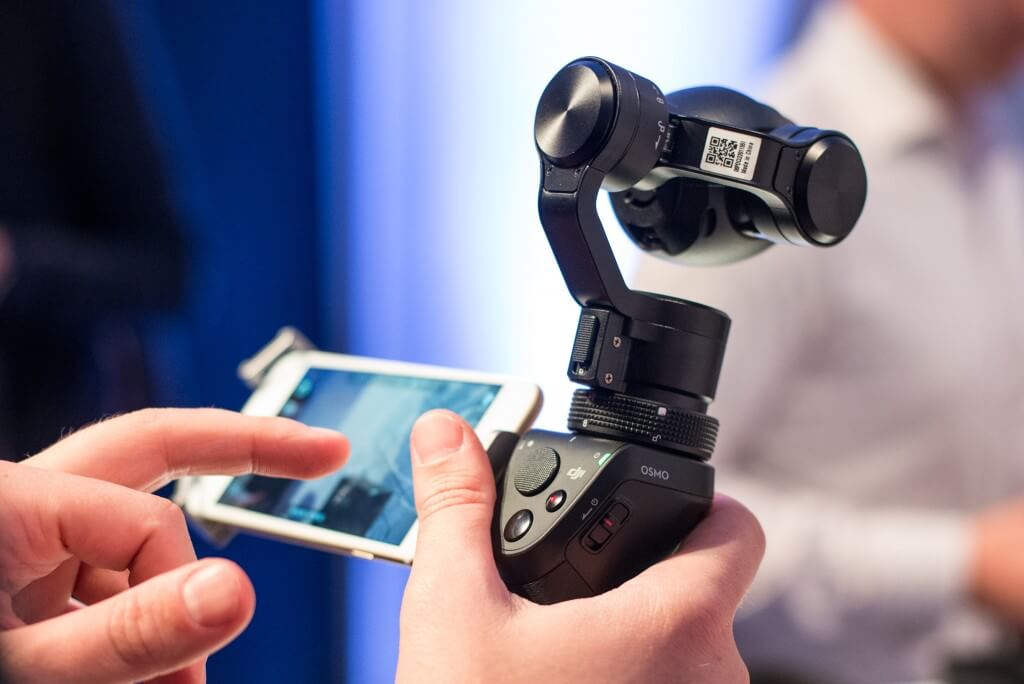
 Long Exposure : The stabilisation allows long exposure light-trail photos to be taken without the need for a bulky tripod.
Long Exposure : The stabilisation allows long exposure light-trail photos to be taken without the need for a bulky tripod.  Slow Motion : Either through compressed sequences of time-lapse photos or full blown 120fps HD video, the Osmo is able to warp time and produce fantastic results whilst handheld.
Slow Motion : Either through compressed sequences of time-lapse photos or full blown 120fps HD video, the Osmo is able to warp time and produce fantastic results whilst handheld.



 The supplied storage case (shaped almost like a guitar case) is a hard fabric shell with soft lining, and has a red 'Osmo' tag and zip running along the longest edge. Inside there is enough room for the Osmo to fit in its 'parked' mode with the mobile device cradle stowed and folded, whilst a velcro strap holds the system in place.
The supplied storage case (shaped almost like a guitar case) is a hard fabric shell with soft lining, and has a red 'Osmo' tag and zip running along the longest edge. Inside there is enough room for the Osmo to fit in its 'parked' mode with the mobile device cradle stowed and folded, whilst a velcro strap holds the system in place. 

 On the rear control panel is the pan/tilt joystick (similar to a playstation analogue input) right by your thumb that assists you in positioning the camera. Alternately (depending on mode) you can actually grab the camera body and rotate it into position yourself, where the gimbal will then take over and hold the camera in that orientation for you.
On the rear control panel is the pan/tilt joystick (similar to a playstation analogue input) right by your thumb that assists you in positioning the camera. Alternately (depending on mode) you can actually grab the camera body and rotate it into position yourself, where the gimbal will then take over and hold the camera in that orientation for you.  Below to the right are the record and shutter buttons for video and photo actuation. Finally on the front of the handle, right where your index finger naturally falls is the mode trigger. Hold the trigger down to enable 'locked' mode, tap twice to centre the camera or tap three times to enter selfie mode (should that be your thing) where the camera will swivel 180° to face the operator.
Below to the right are the record and shutter buttons for video and photo actuation. Finally on the front of the handle, right where your index finger naturally falls is the mode trigger. Hold the trigger down to enable 'locked' mode, tap twice to centre the camera or tap three times to enter selfie mode (should that be your thing) where the camera will swivel 180° to face the operator.  Those familiar with the Inspire 1 will recognise the swivel mount for the gimbal. Rotate this to release the camera and gimbal from the handle. Inside you can see the contact pins for control communication and power. Finally there is a switch on the back of the gimbal that lets you lock the camera in place for transit. Should you fire up your Osmo and wonder why it is beeping at you and not stabilising, its likely that you have left this switch on.
Those familiar with the Inspire 1 will recognise the swivel mount for the gimbal. Rotate this to release the camera and gimbal from the handle. Inside you can see the contact pins for control communication and power. Finally there is a switch on the back of the gimbal that lets you lock the camera in place for transit. Should you fire up your Osmo and wonder why it is beeping at you and not stabilising, its likely that you have left this switch on. 
 When not in use it simply folds away to a small block of metal that can be stored in the case. A protection cap is provided to blank the knurled mounting point when no accessories are attached.
When not in use it simply folds away to a small block of metal that can be stored in the case. A protection cap is provided to blank the knurled mounting point when no accessories are attached. 
 Alternatively you can expect 6 hours of standby time. The battery charger light doubles up as a battery status indicator when the charger is not connected to the mains, allowing you to check your battery health 'in the field'. The device will also enter a 'sleep' mode should you put it down for a few minutes to minimise power wastage.
Alternatively you can expect 6 hours of standby time. The battery charger light doubles up as a battery status indicator when the charger is not connected to the mains, allowing you to check your battery health 'in the field'. The device will also enter a 'sleep' mode should you put it down for a few minutes to minimise power wastage.  The Osmo grip houses the battery, simply slide the door on the base of the handle forward and swing it open to reveal the cell. It is held in place by a sprung latch, similar to many consumer cameras. Batteries are expected to be available as spares towards the end of the month.
The Osmo grip houses the battery, simply slide the door on the base of the handle forward and swing it open to reveal the cell. It is held in place by a sprung latch, similar to many consumer cameras. Batteries are expected to be available as spares towards the end of the month. 




 All of the above accessories are available to pre-order at RC Geeks.
All of the above accessories are available to pre-order at RC Geeks.
 DJI also announced a 'standalone' Osmo handle. Aimed at current inspire owners, it will enable them to mount their current X3 camera to an Osmo handle. We expect this kit will released soon. Finally, with a DJI-supplied adapter plate the Osmo is compatible with the X5 and X5 Pro cameras available on the recently released Inspire 1 Pro (should you need to justify that Inspire Pro purchase!) placing incredible image quality and stabilisation, literally in your hands!
DJI also announced a 'standalone' Osmo handle. Aimed at current inspire owners, it will enable them to mount their current X3 camera to an Osmo handle. We expect this kit will released soon. Finally, with a DJI-supplied adapter plate the Osmo is compatible with the X5 and X5 Pro cameras available on the recently released Inspire 1 Pro (should you need to justify that Inspire Pro purchase!) placing incredible image quality and stabilisation, literally in your hands! 






